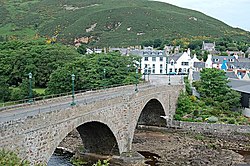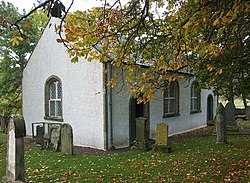Sluggan Bridge from the south - geograph.org.uk - 142814
Relevante Bilder










































Relevante Artikel
DulnainDer Dulnain, schottisch-gälisch Tuilnean, ist ein Fluss in der schottischen Council Area Highland. Er entsteht durch den Zusammenfluss dreier Quellbäche in 790 m Höhe in den Monadhliath Mountains in der traditionellen schottischen Grafschaft Inverness-shire. Von dort aus fließt er 45 km in nordöstlicher Richtung. Der Lauf des Dulnain dreht sukzessive nach Osten ab. Die letzten zwei Kilometer vor der Mündung in den Spey bei Dulnain Bridge in 215 m Höhe verlaufen in südöstlicher Richtung. Der Dulnain überwindet insgesamt einen Höhenunterschied von 575 m. .. weiterlesen
Liste der Kategorie-A-Bauwerke in HighlandDie Liste der Kategorie-A-Gebäude in Highland umfasst sämtliche in der Kategorie A eingetragenen Baudenkmäler in der schottischen Council Area Highland. Die Einstufung wird anhand der Kriterien von Historic Scotland vorgenommen, wobei in die höchste Kategorie A Bauwerke von nationaler oder internationaler Bedeutung einsortiert sind. In Highland sind derzeit 183 Bauwerke in der Kategorie A gelistet. .. weiterlesen
